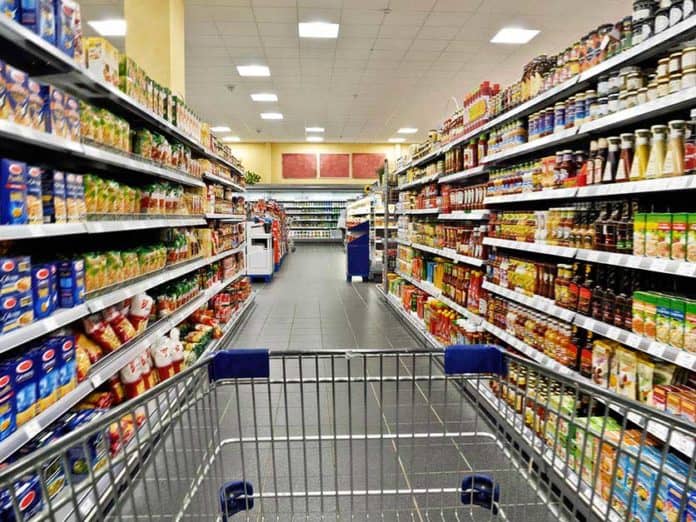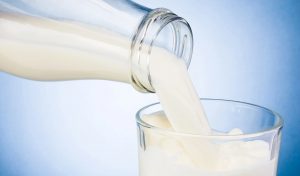
Even as commodity prices come down, consumers continue to pay high prices for many supermarket essentials.
The food at home index — which indicates changes in retail food prices — rose 5.8% over the last 12 months ending in May, according to the U.S. Bureau of Labor Statistics. Specifically, cereals and bakery products rose 10.7% over the same period.
While the cost of eggs dropped nearly 14% in May, three of the six major grocery store food group indexes increased over the month, including fruits and vegetables, which saw a 1.3% jump.
Burt Flickinger III, managing director of Strategic Resource Group, a New York-based retail and consumer goods consulting firm, compared the current situation to poor crop years from early last decade.
“While the prices understandably went up during inflation, the same things happened with big increases in commodity prices when there were higher prices in crop years 2011, 2012 and 2013,” he said. “When the cost of wheat, grain, soybeans, malt, barley and protein came down in the middle to end of last decade, the brand manufacturers continued to raise prices that had no relation to crop year harvested prices, and the same thing is happening now.”
Exorbitant cereal costs are delivering a particularly painful punch to customers.
“The ready-to-eat cereal millers — Kellogg’s, Quaker Oats and General Mills — kept cereal prices up so high that cereal now costs more than some cuts of steak and a lot more than chicken and pork,” Flickinger said.
Flickinger noted while egg prices have come back to normal, the price of food made with eggs has not come down.
He also claims soft drink manufacturers including Coca-Cola, Dr. Pepper and PepsiCo are among the worst offenders.
The average 12-ounce soft drink currently costs 54 cents, up 14% from a year ago, according to the Bureau of Labor Statistics.
“Their prices are down significantly in terms of the cost of steel, tin, diesel fuel, sugar and raw ingredients, yet they keep raising the prices higher and higher and discount less and less,” Flickinger said.
Among other items continuing to cost consumers more are paper towels, bathroom tissue and facial tissues.
“Paper products have stayed elevated even though the paper pulp markets on a commodity basis have decreased 55% or more from their highs,” Flickinger said.
Salted snacks prices also continue to be too high and have not corrected to reflect lower agriculture prices, Flickinger said.
Potato chips cost $6.45 a pound, up 15% from last year, according to the Bureau of Labor Statistics.
Cookie and cracker prices are really elevated when they should have corrected because of lower commodity prices, Flickinger added.
A pound of chocolate chip cookies costs $5.15, roughly 14% higher than a year ago, according to the Bureau of Labor Statistics.
Milk and ice cream prices remain some of the highest in modern history, Flickinger said.
Ice cream costs $5.81 for a half gallon, up 9% from a year ago, per the Bureau of Labor Statistics.
“It’s really just eggs, pork, poultry, and locally produced fruits and vegetables that are fairly priced,” Flickinger said. “Everything that is processed and packaged seems to be unfairly priced too high.”
United Neighborhood Centers of Northeastern Pennsylvania experienced a 300% increase in people seeking help through its Angel’s Attic food pantry during the past year-and-a-half due to the rising grocery costs.
“In January 2022, we were serving approximately 300 families,” said Dana Force, UNC’s assistant director of community services. “Now we’re seeing anywhere between 1,200 and 1,300. It’s gradually increased and once the food stamps were cut, we saw a dramatic increase.”
Specifically, Force recently noticed a lot of demand for milk, butter and baby food — another item that continues to be highly priced.
“Because of limited competition in the United States, baby food prices are inordinately high per ounce, gram and pound, and that’s unfair to shoppers because the cost of baby food, baby formula and disposable diapers has never been higher,” Flickinger said.
Eric Martinelli, food service operations manager for Schiff’s Marketplace, which has stores in Scranton and Forty Fort, still sees some higher prices in certain items, particularly sugary products.
“Cereal costs are still above average — roughly 10% to 15% higher,” Martinelli said. “It’s definitely not where it was pre-pandemic. Those prices have not waned yet.”
Soda and energy drinks remain about 15 to 20% more expensive, he added.
Martinelli already began noticing some prices start to come down, including fresh meats, and remains optimistic consumers will see relief in other items in the coming months.
“I think we’ll start seeing the prices ease, and prices will start to return to pre-pandemic levels, or a just a little bit higher,” he said.























